VERY RARE! WWI Battle of Messines British Expeditionary Force 1916 “Capture of Wytschaete” Front-Line Combat Trench Map*

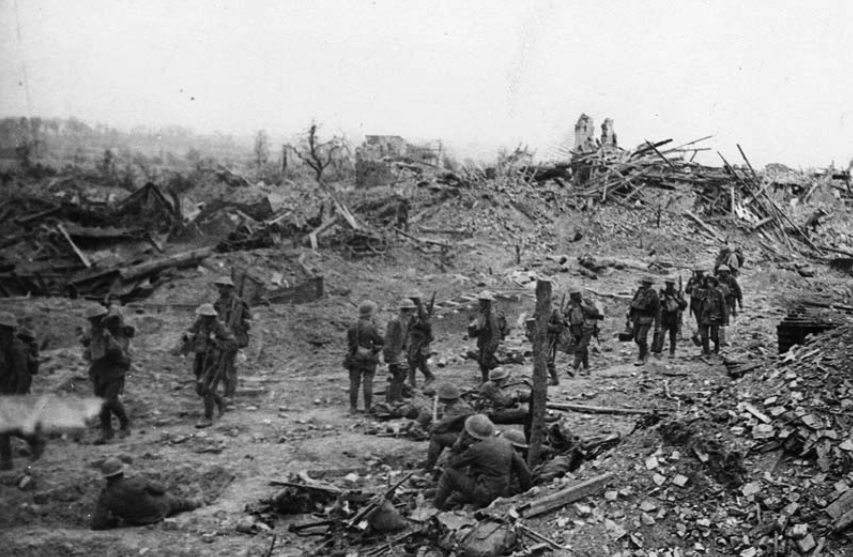


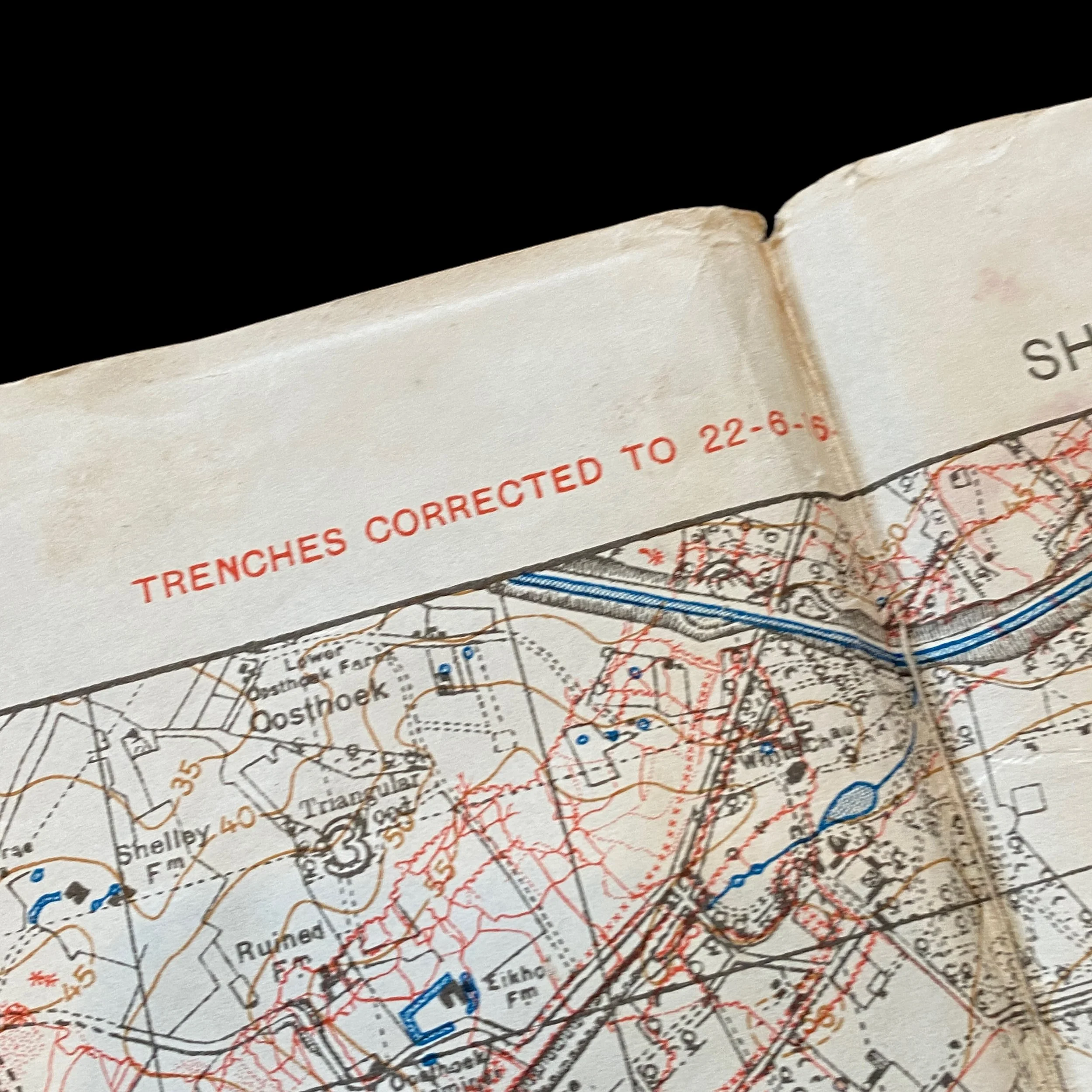
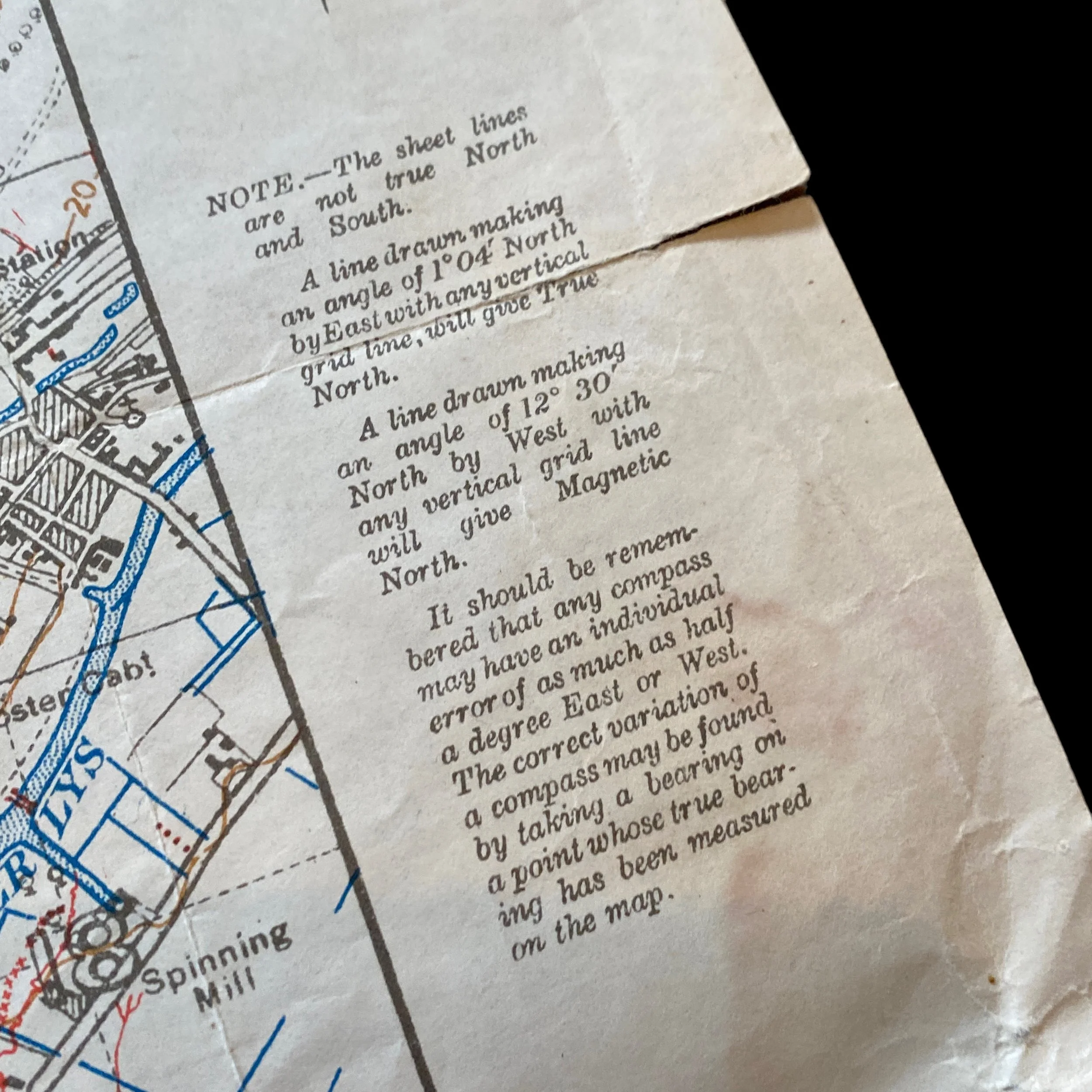





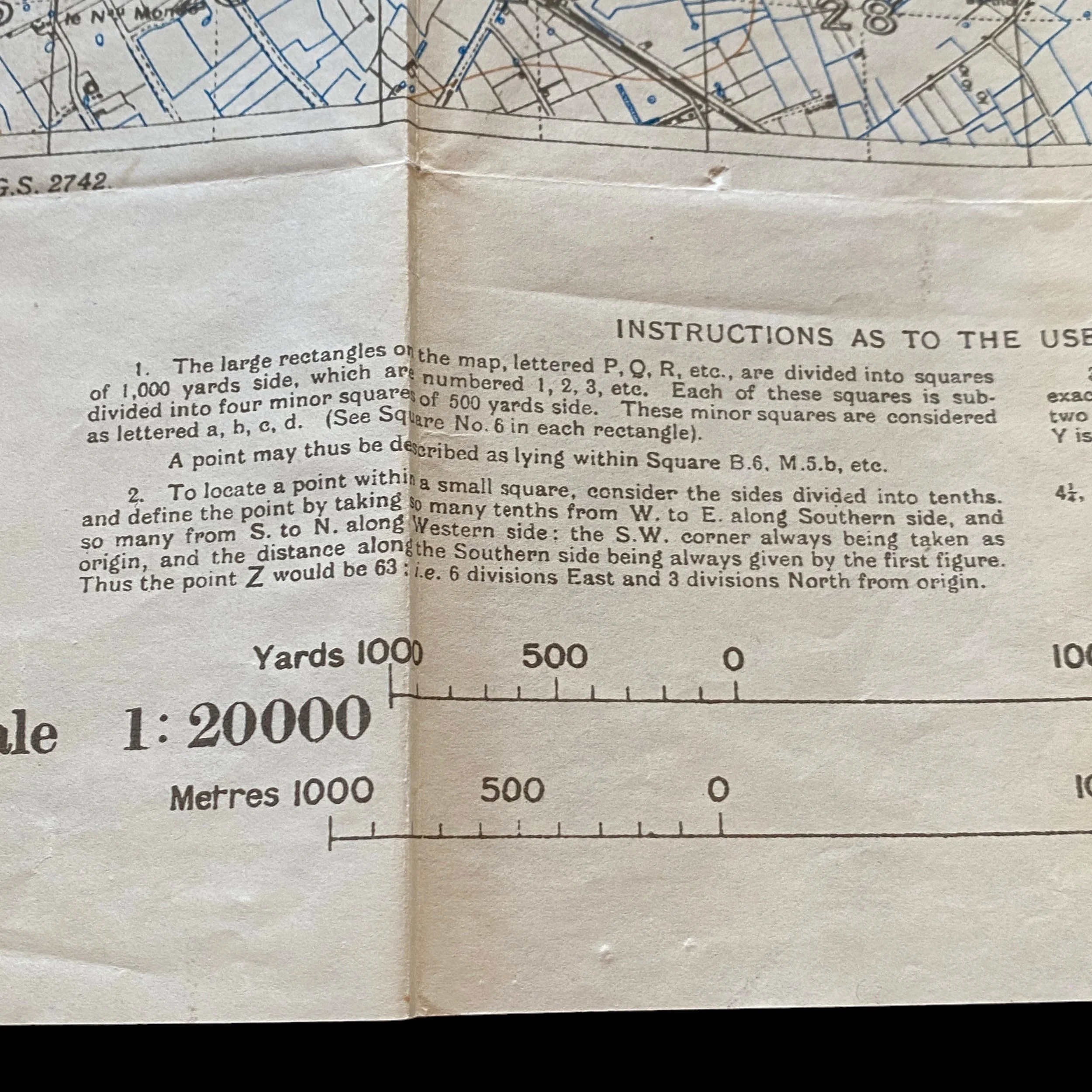













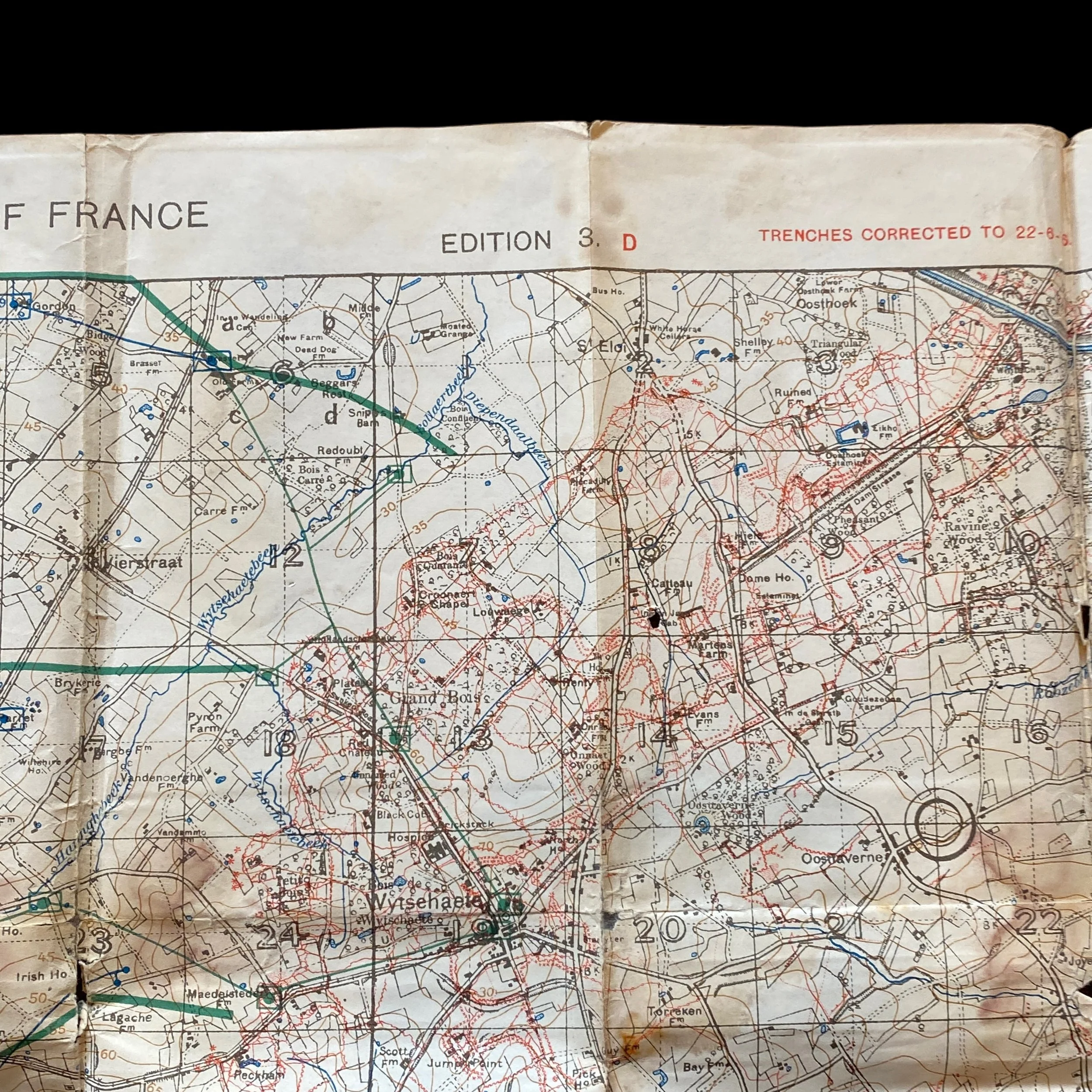



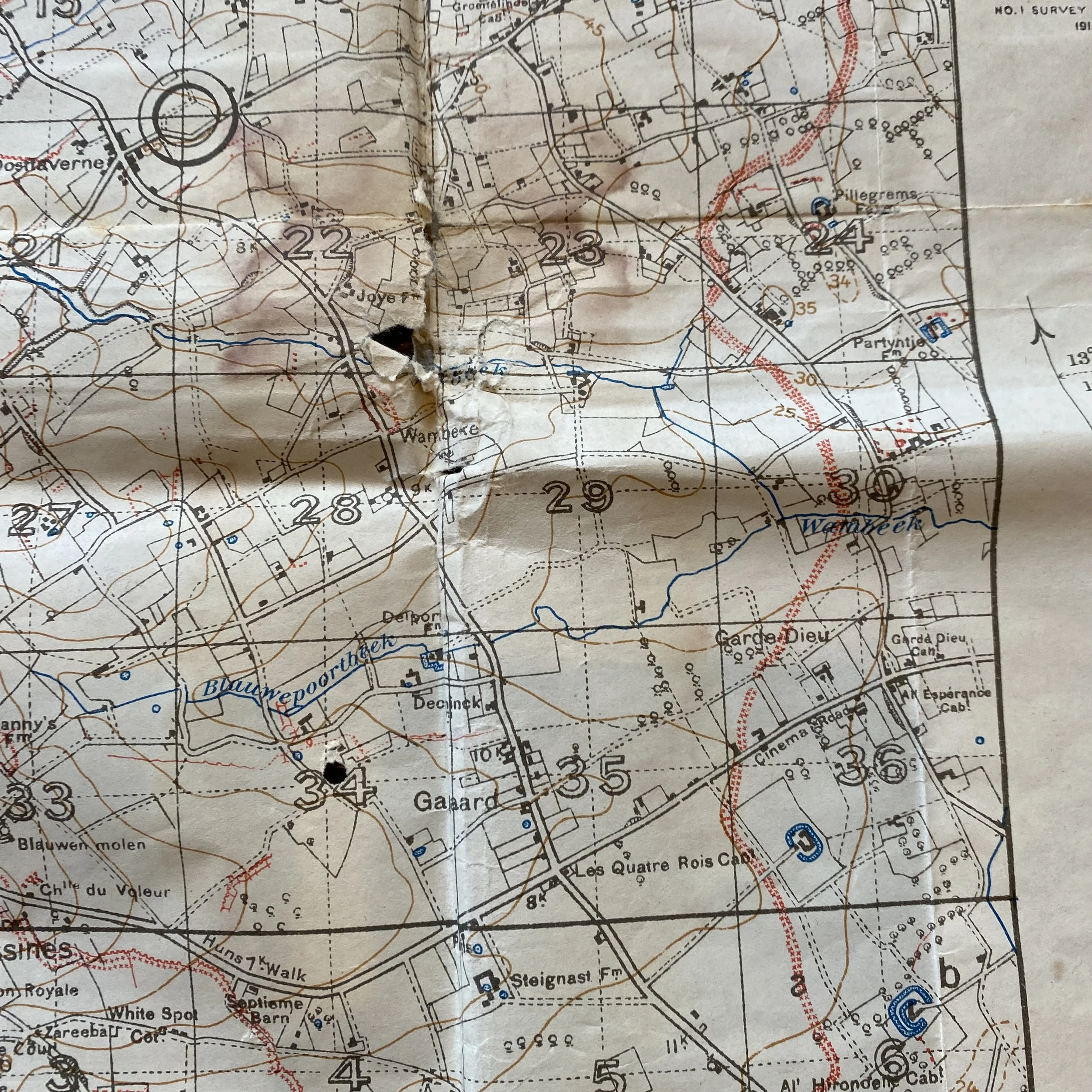






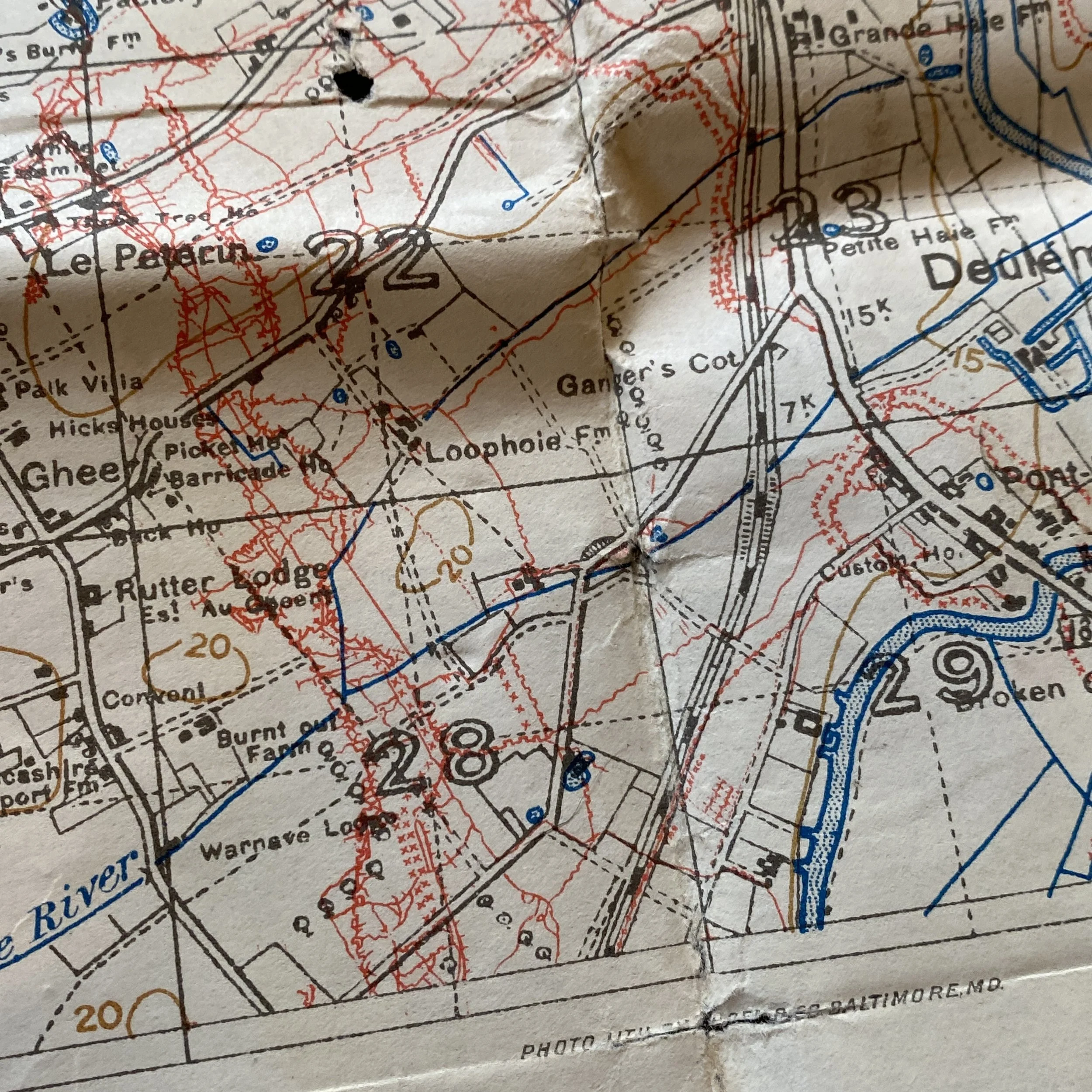


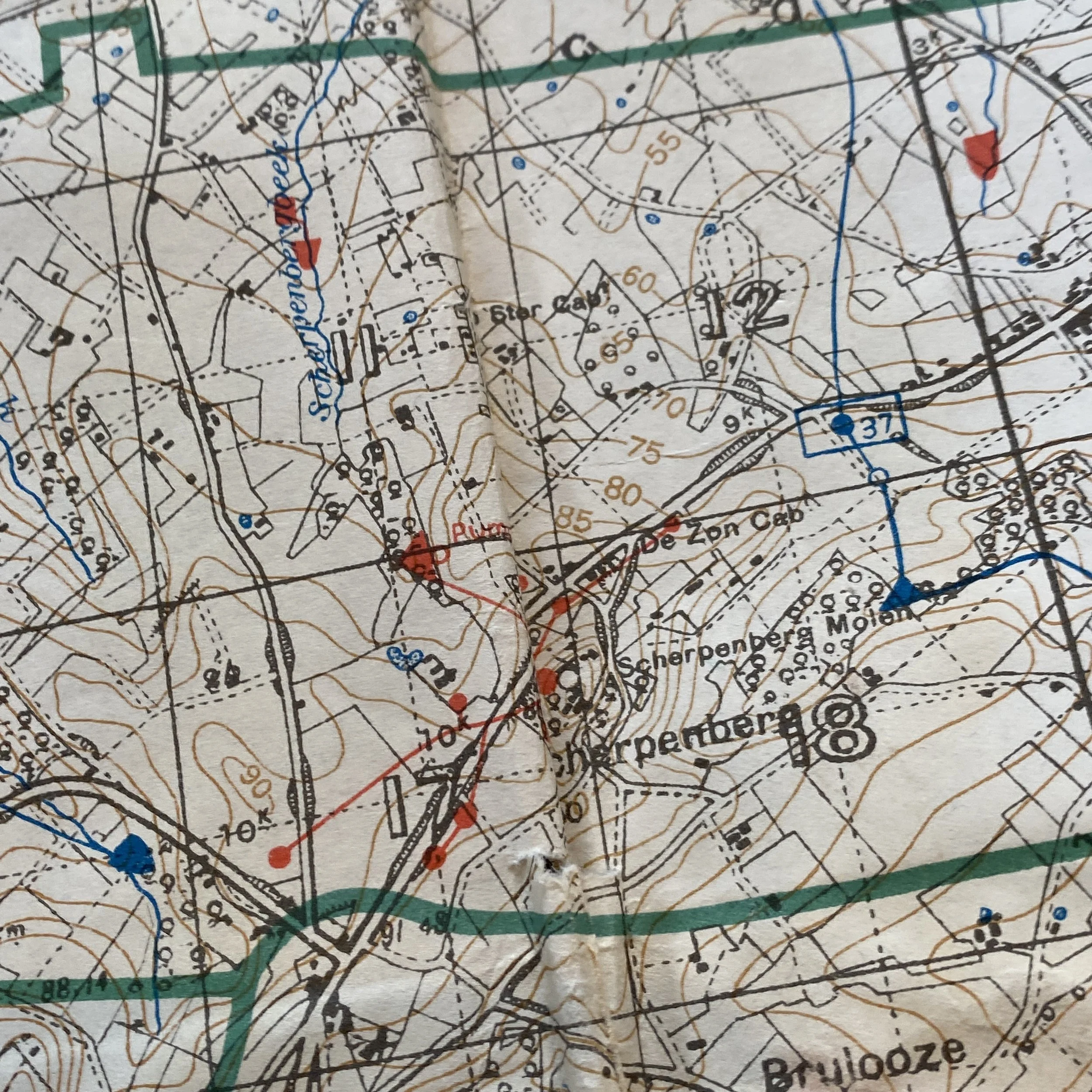







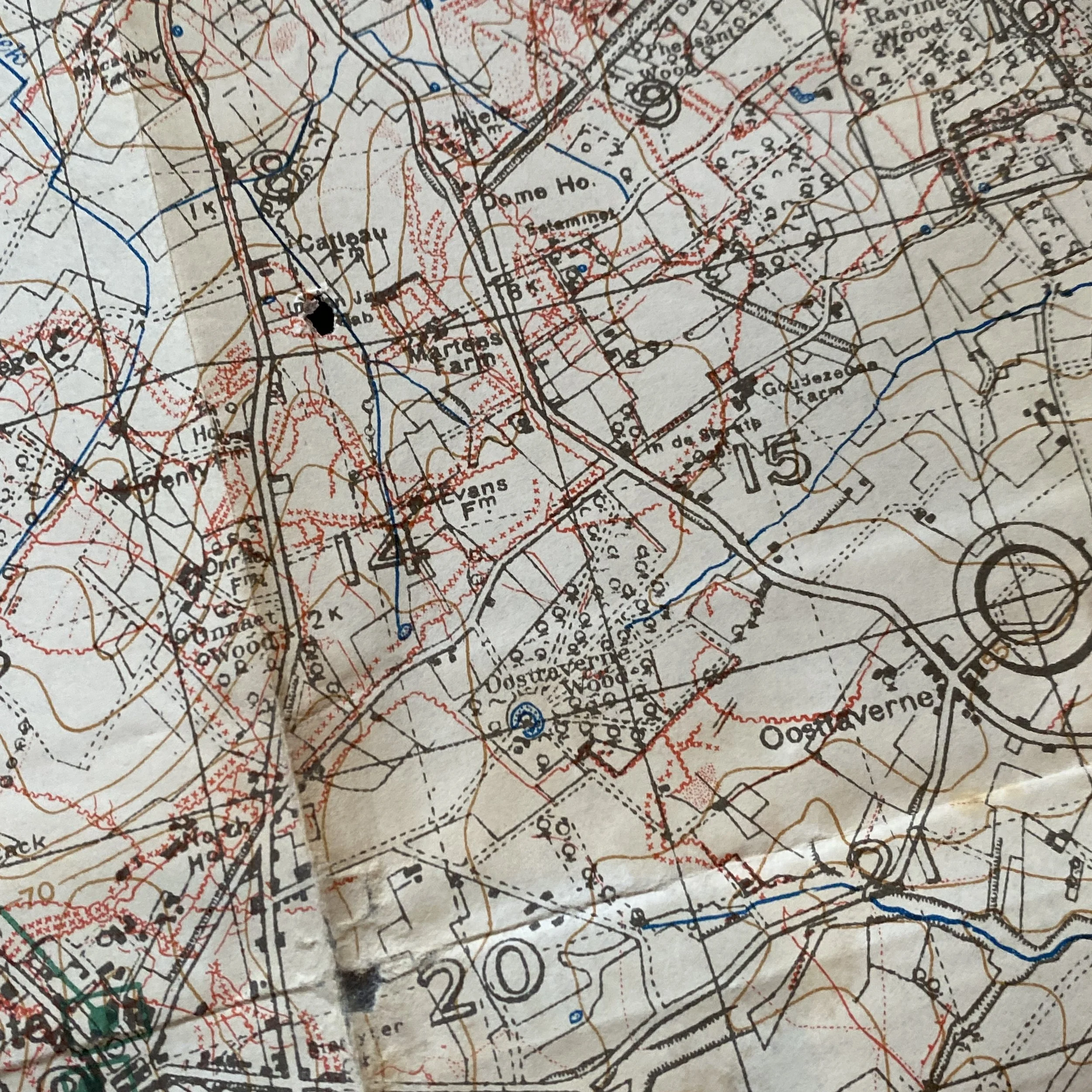






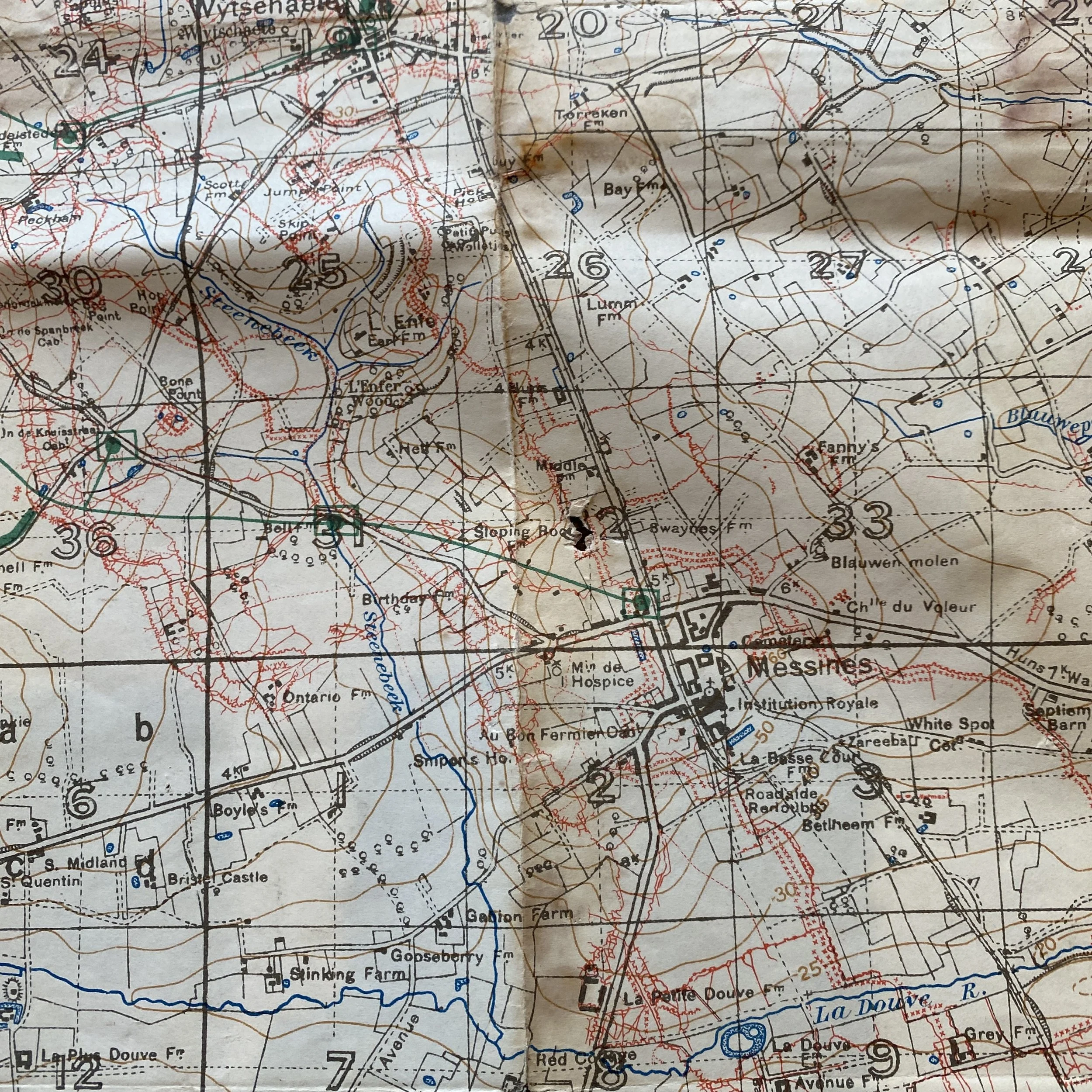
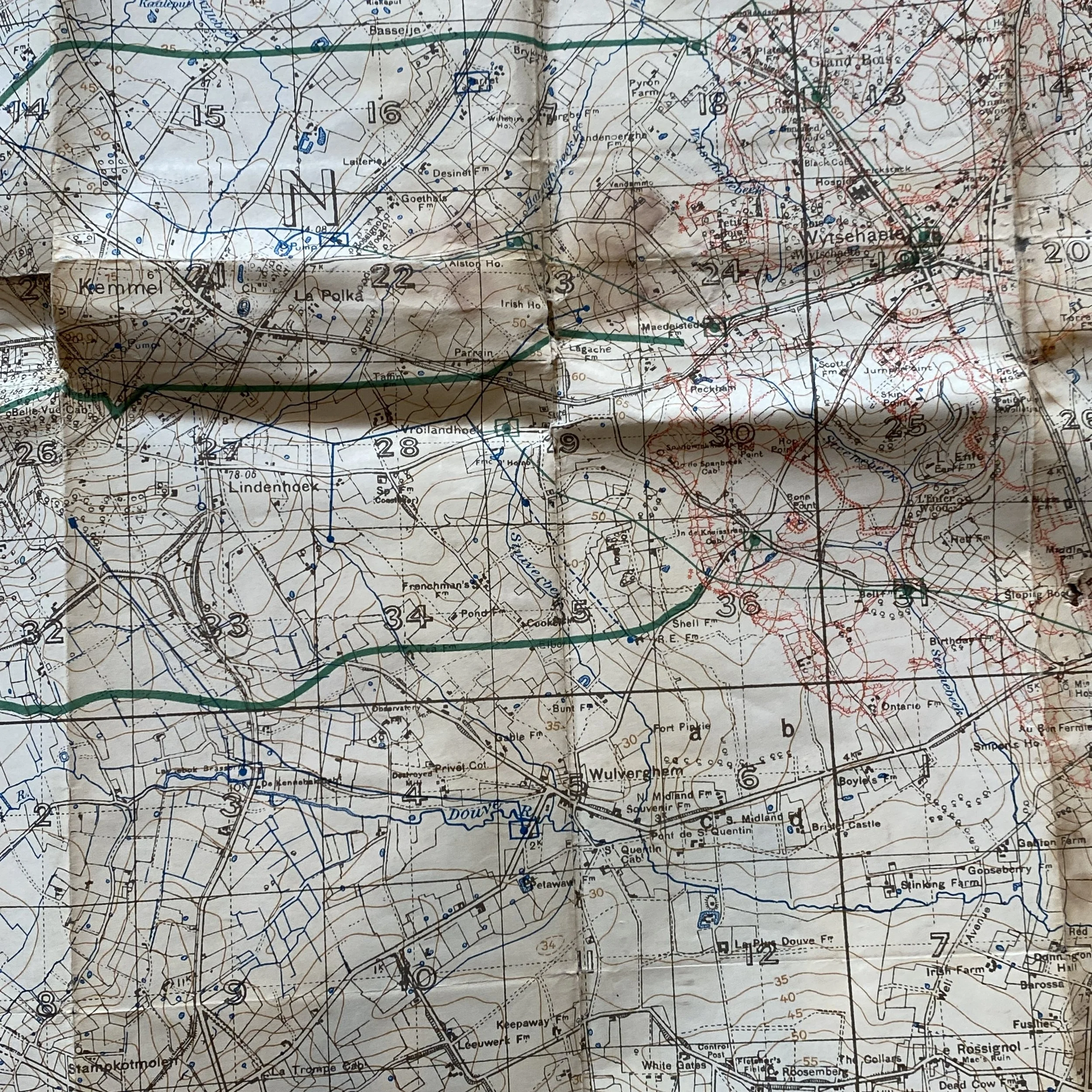
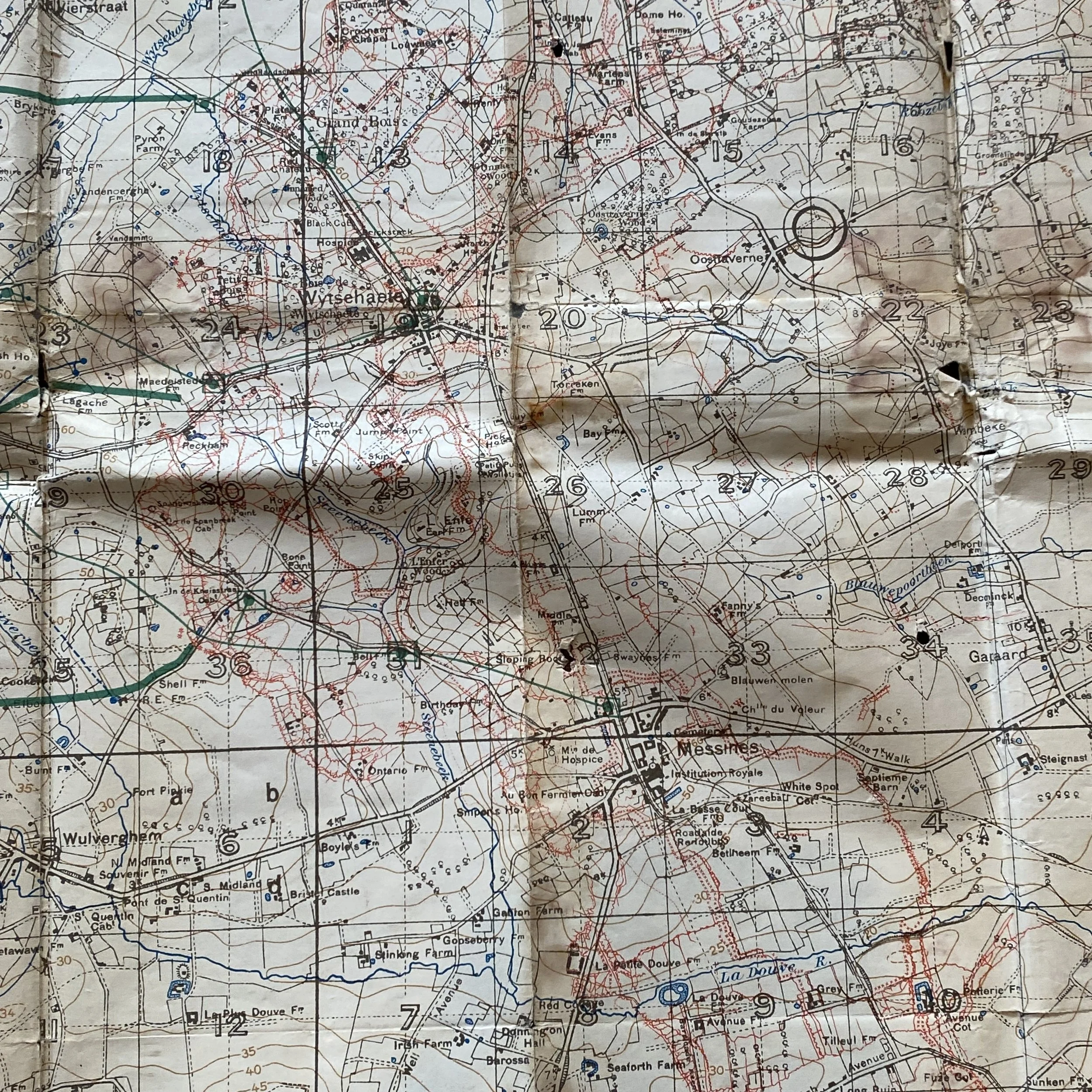




VERY RARE! WWI Battle of Messines British Expeditionary Force 1916 “Capture of Wytschaete” Front-Line Combat Trench Map*
Comes with hand-signed C.O.A.
This incredibly rare and museum-grade WWI British Expeditionary Force 1916 front-line combat trench map was heavily used during the famous “Capture of Wytschaete”. The Capture of Wytschaete was a tactical incident in the Battle of Messines (7–14 June 1917) on the Western Front during the First World War. On 7 June, the ridge was attacked by the British Second Army; the 36th (Ulster) Division and the 16th (Irish) Division of IX Corps captured the fortified village of Wytschaete on the plateau of Messines Ridge, which had been held by the German 4th Army since the First Battle of Ypres (19 October – 22 November 1914).
The Germans had spent two years fortifying the defences and the local commanders had been assured that British mining attempts had been defeated. The British attack at Messines was set for 7 June and the plan included the detonation of deep mines that had been laid under the German front position since 1915.
What makes this frontline B.E.F. trench map map so unique is the detailed German trench system shown that marked “TRENCHES CORRECTED TO JUNE 22nd, 1916”. These red German corrected trenches are also further detailed a key of BRITISH FRONT LINE TRENCHES, ENTANGLEMENT AND OTHER OBSTACLES, GROUND CUT UP BY ARTILLERY FIRE, MINE CRATERS, MINE CRATERS (FORTIFIED).
The map itself shows some of the most important towns and landmarks of the battle. This map features the locations of each of the 19 mines planted under German held territory where 10,000 German soldiers were killed instantly. Soldiers were ordered to attack even if all mines didn't explode. Artillery fire continued throughout the battle as infantry advanced with tank providing close support and flying aircraft flying over for support.
For more information on this particular battle and the importance of this map we recommend watching the film "The Battle of Messines” which was produces to accompany a new exhibition at the Somme Museum, Newtownards launching June 15, 2017.
https://www.youtube.com/watch?v=4QulSKr2tC8
Full WWI Combat History of Wytschaete:
Wytschaete, or Whitesheet as it was known to British troops, is a town situated on a chain of hills extending south-west and north-east around Ypres. Due to its elevated position on the Messines Ridge, the area was the scene of heavy fighting throughout the First World War. Wytschaete was captured by German troops of the Bavarian contingent after 3 days of intense fighting against British and (very briefly) French defenders on 2 November 1914. With the fall and capture of the Messines Ridge the German Army now held dominating hilltop positions which throughout the following two and a half years, now consolidated and heavily fortified, allowed it to observe every move the British made in front of Ypres and to direct a well-aimed artillery fire upon them. Wytschaete was heavily fortified.
36th (Ulster) Division
Zero hour was 3:10 a.m. when visibility was expected to be 100 yds. The usual pattern of night bombardment had continued as a deception but then the mines and the British artillery were fired. Crimson cylinders of flame rose from the mines and pieces of earth landed 0.5 miles away! Black smoke rose after the flames; there was a flash, the earth shook and then a great roar moved outwards from the detonations. In twilight and dust the first wave advanced at an interval of 25 yds in case of a German counter-barrage. The Spanbroekmolen mine was fifteen seconds late and some soldiers of the 14th Battalion Royal Irish Rifles (RIR) were knocked over, then got up and closed up to the creeping barrage. Keeping direction was difficult while going round the crater edges and platoon commanders used compasses to find the way. Men from the 25th Division on the right strayed into the 36th (Ulster) Division area causing minor congestion but the Germans still alive in the front position were incapable of resistance. Two machine-guns fired on the 109th Brigade front after the British barrage had passed over them; one gun was knocked out by rifle-grenade fire and the other by a Lewis gun.
The German artillery reply was poor and fell on the empty British front line as the British infantry followed the creeping barrage, reaching the red line at 3:45 a.m. (zero + 35), the mopping up battalion collecting prisoners. The barrage stood still for fifteen minutes and the two following companies in each battalion leap-frogged the leading ones, ready to take over the advance to the blue line. As the advance resumed, the right hand battalion of the 107th Brigade descended into the Steenbeek valley on the right; as soon as the barrage had passed, German machine-guns began to fire from L'Enfer Wood, Earl Farm, Skip Point and Scott Farm. The machine-guns at Skip Point fired until the 9th RIR and troops from the 14th RIR rushed them from two directions; the garrison fought on inside until more than 150 Germans surrendered. At Scott Farm, the commander stood on the blockhouse rallying the garrison until shot down by a sniper, which caused the Germans inside to surrender. The most formidable German position below the ridge was at Jump Point but this fell quickly and the leading waves reached the blue line at 4:50 a.m., in contact with the flanking divisions.
The advance halted again and the troops began to consolidate the ground as the four battalions to attack the black line moved forward in artillery formation, the 107th Brigade battalions encountering a small amount of German artillery-fire in the Steenbeek valley but losing few casualties. At 6:50 a.m. the barrage began to move forward towards the green intermediate line and as the troops moved beyond it, the garrison of Pick House offered resistance. Rifle-grenades were fired along with a captured machine-gun from the flank and the troops inside surrendered. The British Vickers gun crews had fallen behind, toiling over the crater-fields with the guns, tripods and ammunition boxes. The 10th Battalion Royal Inniskilling Fusiliers to the north was held up by a machine-gun but a tank nearby was directed towards it and knocked out the gun. The left flank of the Inniskillings was pinned down by German infantry lined along a ditch until a platoon of the 9th Battalion outflanked the position, killed three of the Germans and took the rest prisoner. The 9th Inniskillings and two tanks attacked right-hand side of Wytschaete and the battalion fought its way through the village, taking a battalion headquarters and about fifty prisoners in a house near the Messines–St Eloi road.
The German defence was most successful on the right flank against the 15th RIF, where 100–200 yd before the road between Messines and Wytschaete, German machine-gunners forced the attackers under cover until the positions of the strongpoints were found. A Lewis gun fired at Lumm Farm on the right, while the rest of the platoon attacked and another machine-gun nest on the left was engaged; Lumm Farm was captured by hand-to-hand fighting. Consolidation of the black line began and at 8:40 a.m. patrols went forward, keeping touch with the flanking divisions, for about 1,000 yd to the dotted black line (later called the mauve line), which was to be held as an outpost line. Field artillery began to move up to the old front line and some crossed no man's land to the red line, the move being completed just after 10:00 a.m. but no sign of a substantial German counter-attack was seen for another two hours. Around noon, IX Corps HQ reported that German infantry and transport had been reported moving west from the Ypres–Comines Canal at Houthem by aircraft and balloon observers. The digging in on the black line and strong points further back was well advanced, engineer stores were delivered by pack mule and a big dump of German barbed wire found at Guy Farm was commandeered.
16th (Irish) Division
The attacking troops began their assembly on 6 June, collecting equipment from dumps as they moved to their jumping-off points. From 2:00 to 2:45 a.m. on 7 June, the British artillery fell silent and then at 3:10 a.m. the mines began to detonate. As soon as the mines had gone off, the British artillery opened fire, creating three barrage lines and the counter-battery groups bombarded German artillery positions with gas. The infantry began to advance, finding it darker than expected, the visibility being reduced by the smoke and dust of the mines mixing with that of the shell explosions. The view was limited to 50 yds illuminated only by white and green SOS flares rising from the German lines. The 16th (Irish) Division attacked between Maedelstede Farm and the Vierstraat–Wytschaete road and found that the mines at Maedelstede and the two on the left at Petit Bois had devastated the defenders. The mines at Petit Bois in the 49th Brigade area were about 12 seconds late and knocked over some of the advancing infantry. The advance continued through the remains of Wytschaete wood and Grand Bois, which had been hit by a 2,000 oil drum Livens Projector bombardment on the night of 3/4 June and by standing barrages on all the known German positions in the woods. The garrison of L’Hospice in the northern part of the wood were by-passed and did not surrender until 6:48 a.m. The second intermediate objective, the first trench of the German second line, on the west side of the plateau, was reached just after 5:00 a.m. Captured records showed that the Germans had predicted that an attack could be stopped short of the western crest, until reinforcements from the Eingreif divisions arrived.
A two-hour pause ensued, before the attack on the next objective, the second trench of the German second line at the rear (Eastern) crest of the ridge, began and at 7:00 a.m. the British artillery barrages began to creep forward again. The infantry of the 16th (Irish) Division followed with some of the 16 tanks of the II Tank Brigade in support. A tank drove into Wytschaete, followed by the 1st Battalion Munster Fusiliers, who advanced into the wreckage of the village from all sides as the 2nd Battalion, Royal Irish Regiment captured the northern fringe. The infantry found that the bombardment on 3 June had demolished the houses and the area was quickly overrun. The Germans in the woods nearby held out for longer, despite the Livens Projector bombardment, managing to get several machine-guns into action. Half of the attacking companies were reserved for mopping up in the village and by 9:30 a.m., the village had been secured. The supporting battalions leap-frogged through the attacking battalions and several tanks passed through to the eastern side of the village on schedule at H-hour + 3 hours, 40 minutes, although all the tanks broke down. The attacking battalions overran other troops of Grenadier Regiment 4 in the Höhen Line and reached the objective on the far side of the Messines–St Eloi road, in touch with the 36th (Ulster) Division on the right. By 8:00 a.m., the division had captured 682 prisoners and passed on another 300–400 to neighbouring divisions.
1917 Combat Report at Wytschaete:
Action at Zero, 2.10am, 7th June 1917
All Companies moved forward upon the explosion of the mines and the opening of the barrage
B & C Companies went over in waves and lines
D Company went over in one wave
Disorganisation on route and lateness in reaching the front line, couldn’t effectively reorganise and assemble
Both sets of wires crossed successfully
Support line across No Mans Land dug after assaulting Troops had cleared NML
First objective reached, enemy front line, little opposition from the 4th & 9th Bavarian J.R. Initial barrage had done its job, most of the Garrison driven to concrete dugouts
Isolated cases of enemy resistance but easily dealt with
Private J. Carroll single handed captured a German Machine Gun and killed the crew. In addition he bayoneted 5 other Germans during the ‘Mopping up’
Second objective, the enemy support line saw better resistance but was not whole-hearted. Enemy taking refuge in shell holes between their lines were easily dispensed with
German MG in U.16.a opened fire, a party of 5 under Private Spence dealt with this, two men with rifle grenades, whilst the others worked round and captured it
Third objective black line, opposition encountered, strong Infantry post in U.16.c Ultimo Lane, our snipers kept them down, then at 4am 12 Stokes Mortar rounds silenced them
From the afternoon of the 7th June, the 8th and 9th, enemy Snipers and MG’s became more active, but quieter on the 10 one MG in U.16.c and another near Flattened Farm caused most trouble but didn’t inflict too many casualties
3am night of June 8th and 9th a party of around 30 Enemy attempted a raid on our crater but were repulsed by or Lewis Guns, they ocupied the Factory Farm crater a little further South but we dominated this and prevented consolidation
Enemy were unprepared for this attack, no bayonets fixed, most remained in dugouts and were killed by our bombs, few showed any fight, and no determined stand was made anywhere. They would not face the bayonet and cringed for mercy, their morale could hardly be lower
Estimate to say that 150 Enemy killed, accounted for artillery fire, a large percentage by the bayonet, the remaining by rifle fire, bombs and rifle grenades, tyhese being effective on the MG at U.16.a
Lewis Guns placed well forward to cover consolidation
Black Line consolidated, Platoon detailed to consolidate Crater suffered heavily, but later consolidated by around 32 Men withdrawn from the Black Line for this purpose
Digging continued at Black Line by C and D Companies
A Company working on New Support Line, from No mans land to the Enemy's Support Line
B Company worked on Russian Sap completed by 6am on the 9th June, another communication trench dug and completed morning of 10th
Enemy still held Ultimo Reserve, Ultimo Switch, the Factory Farm Crater and a strong point between Ultra lane and Umbro Row opposite this crater
9th June NEW POSTS to be established…